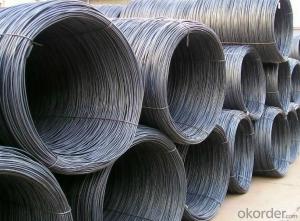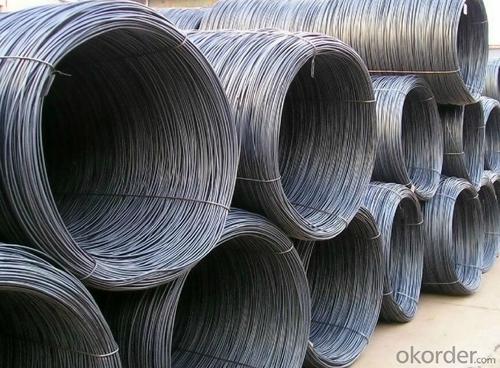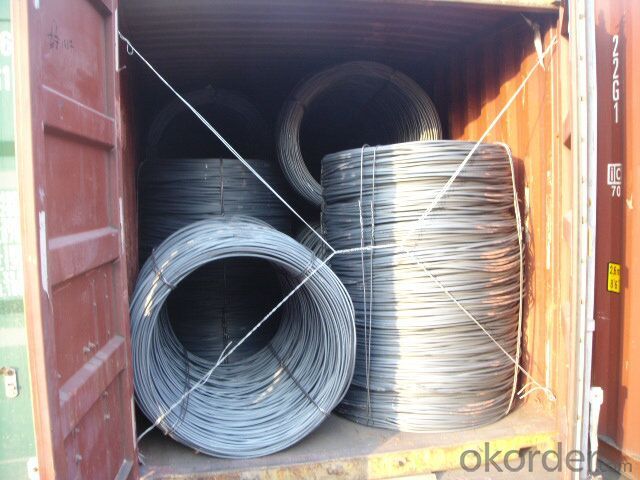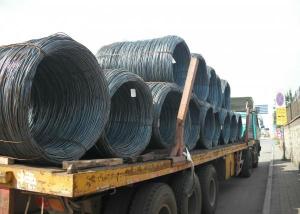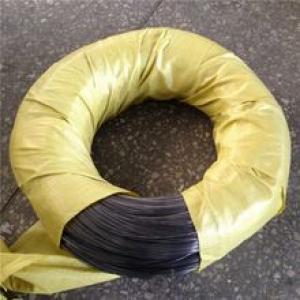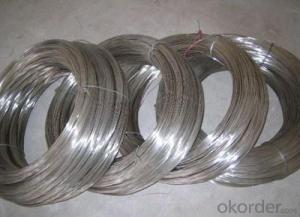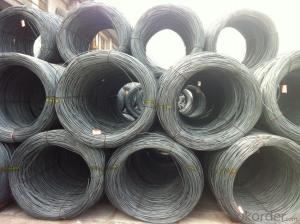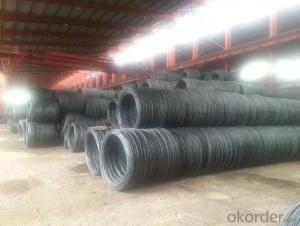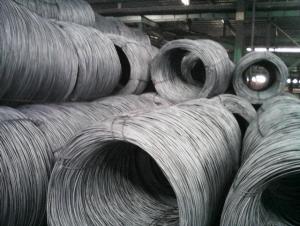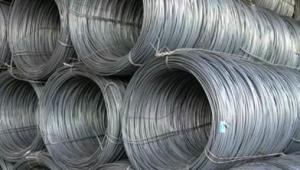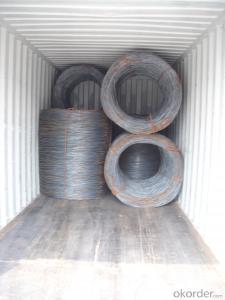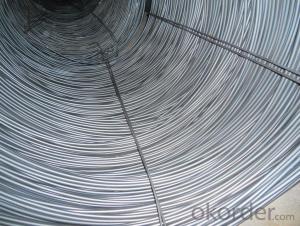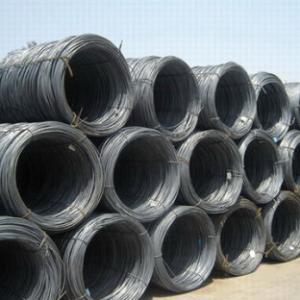Carbon Steel Wire Rod, High Quality Wire Rod
- Loading Port:
- Tianjin
- Payment Terms:
- TT OR LC
- Min Order Qty:
- 30 m.t.
- Supply Capability:
- 100000 m.t./month
OKorder Service Pledge
OKorder Financial Service
You Might Also Like
Specification
Product Description of Carbon Steel Wire Rod, High Quality Wire Rod:
OKorder is offering Steel Wire Rod Coils Steel Hot Rolled Wire Rod Q195 at great prices with worldwide shipping. Our supplier is a world-class manufacturer of steel, with our products utilized the world over. OKorder annually supplies products to European, North American and Asian markets. We provide quotations within 24 hours of receiving an inquiry and guarantee competitive prices.
Product Applications of Carbon Steel Wire Rod, High Quality Wire Rod:
Carbon Steel Wire Rod, High Quality Wire Rod are ideal for structural applications and are widely used in the construction of buildings and bridges, and the manufacturing, petrochemical, and transportation industries.
Product Advantages of Carbon Steel Wire Rod, High Quality Wire Rod:
OKorder's Carbon Steel Wire Rod, High Quality Wire Rod are durable, strong, and resist corrosion.
Main Product Features of Carbon Steel Wire Rod, High Quality Wire Rod:
· Premium quality
· Prompt delivery & seaworthy packing (30 days after receiving deposit)
· Corrosion resistance
· Can be recycled and reused
· Mill test certification
· Professional Service
· Competitive pricing
Product Specifications of Carbon Steel Wire Rod, High Quality Wire Rod:
Hot-rolled steel wire rod for building/construction
2.Near the seaport,low logistic cost
3.High precision,5-12mm
Product |
wire rod |
| Standard | AISI, ASTM, BS, DIN, GB, JIS |
| Material/steel grade | Q195-Q235,SAE1006B, SAE1008B, SAE1010B, SAE1018B, or according to customers requirements |
| Wire Gauge | 5.5-12mm |
| Coil weight | 1.8-2.1mts |
| MOQ | 25MT |
| Delivery Time | 15-30 days after receipt of L/C or deposit by T/T |
| Packing | In coil and load in container, if large quantity, by bulk vessel; Can be packed as customers' special requirements |
| Payment terms | 1).100% irrevocable L/C at sight. 2).30% T/T prepaid and the balance against the copy of B/L. 3).30% T/T prepaid and the balance against L/C |
| Application | widely used in machinery parts, manufacturing industry, electronics industry, metal tools and others |
FAQ:
Q1: Why buy Materials & Equipment from OKorder.com?
A1: All products offered byOKorder.com are carefully selected from China's most reliable manufacturing enterprises. Through its ISO certifications, OKorder.com adheres to the highest standards and a commitment to supply chain safety and customer satisfaction.
Q2: How do we guarantee the quality of our products?
A2: We have established an advanced quality management system which conducts strict quality tests at every step, from raw materials to the final product. At the same time, we provide extensive follow-up service assurances as required.
Q3: How soon can we receive the product after purchase?
A3: Within three days of placing an order, we will begin production. The specific shipping date is dependent upon international and government factors, but is typically 7 to 10 workdays.
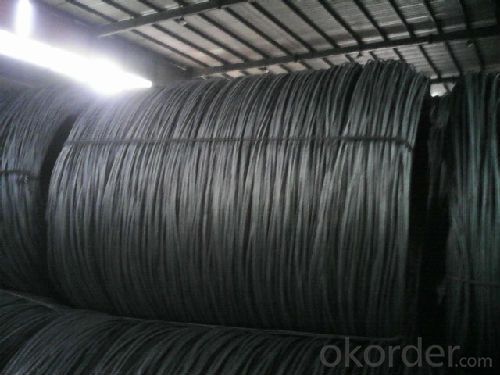
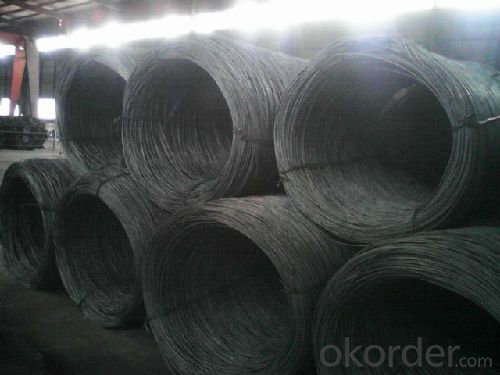
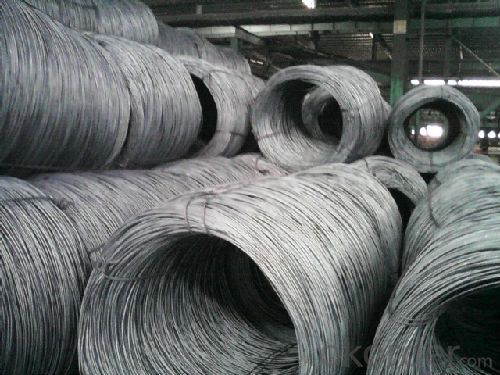

- Q: How is steel wire rod used in the production of wire ropes?
- Steel wire rod is the primary raw material used in the production of wire ropes. It is first drawn into a thin wire and then twisted and braided together to form the strands of the wire rope. The strength and durability of the wire rod ensure that the resulting wire rope can withstand heavy loads and provide reliable support in various applications like construction, mining, and transportation.
- Q: How is steel wire rod used in the manufacturing of wire mesh screens?
- Steel wire rod is used in the manufacturing of wire mesh screens as it serves as the primary material for the production of the wire mesh. The steel wire rod is first drawn into the desired thickness and then woven or welded together to create a mesh pattern. This mesh is then stretched and secured onto a frame to form a sturdy and durable wire mesh screen, which can be used for a variety of applications such as filtration, separation, protection, and reinforcement.
- Q: How is steel wire rod used in the manufacturing of wire rope grips?
- Steel wire rod is commonly used in the manufacturing of wire rope grips as it serves as the raw material for creating the grips. The wire rod is first drawn into the desired diameter and then undergoes a series of processes such as twisting, crimping, and shaping to form the wire rope grip. The high strength and durability of steel wire rod ensure that the resulting grip can securely hold and fasten wire ropes, making it an essential component in their production.
- Q: How is steel wire rod used in the manufacturing of musical instrument strings?
- Steel wire rod is commonly used in the manufacturing of musical instrument strings as it provides excellent strength, durability, and flexibility. This raw material is drawn into thinner gauge wire strands, which are then wound or wrapped around a core material to create the desired string. The high tensile strength of steel wire rod ensures that the strings can withstand the tension and stress exerted during playing, while its flexibility allows for the production of different string gauges and tensions to suit various musical instruments. Overall, steel wire rod forms the foundation for creating reliable and high-quality musical instrument strings.
- Q: What are the different types of steel wire rod annealing atmospheres?
- There are several different types of steel wire rod annealing atmospheres that can be used depending on the desired outcome and specific requirements of the process. These atmospheres can vary in terms of the gases used and the conditions maintained during annealing. 1. Nitrogen Atmosphere: Nitrogen gas is commonly used in steel wire rod annealing processes. It is an inert gas that helps to protect the material from oxidation and decarburization. Nitrogen atmosphere creates a stable environment for annealing, ensuring consistent and controlled heat treatment. 2. Hydrogen Atmosphere: Hydrogen gas is another commonly used annealing atmosphere for steel wire rods. Hydrogen helps to minimize surface oxidation and can also aid in the removal of any surface contaminants or impurities. It promotes a clean and bright surface finish on the wire rod. 3. Vacuum Atmosphere: Vacuum annealing involves creating a low-pressure environment by removing air and other gases from the annealing chamber. This atmosphere prevents oxidation and allows for precise control over the annealing process. Vacuum annealing is often used for high-quality wire rods that require minimal surface defects and improved mechanical properties. 4. Inert Gas Mixtures: In some cases, a mixture of inert gases such as nitrogen and hydrogen may be used as an annealing atmosphere. This combination can provide the benefits of both gases, such as protection against oxidation and impurity removal. The specific mixture and ratios are determined based on the desired outcome and material requirements. 5. Controlled Atmosphere Furnaces: Controlled atmosphere furnaces allow for precise regulation of the annealing atmosphere by continuously monitoring and adjusting the gas composition. This enables the optimization of annealing conditions to achieve desired material properties and surface finishes. It is important to note that the choice of annealing atmosphere depends on the specific steel composition, desired properties, and end-use application of the wire rod. By carefully selecting the appropriate atmosphere, steel wire rods can undergo a controlled heat treatment process that enhances their mechanical properties, surface quality, and overall performance.
- Q: How is steel wire rod used in the manufacturing of wire forms for agricultural machinery?
- The manufacturing of wire forms for agricultural machinery heavily relies on steel wire rod. This crucial component serves as the raw material that undergoes transformation into various wire forms, including springs, clips, brackets, and hooks. These wire forms play a vital role in ensuring the proper functioning of agricultural machinery. Springs, one of the primary applications of steel wire rod in the manufacturing process, are widely used in agricultural machinery. They provide tension, absorb shocks, and facilitate smooth movement. By coiling steel wire rod into the desired shape and size, these springs contribute to the functionality and durability of agricultural machinery. In addition to springs, steel wire rod is utilized to create clips, brackets, and hooks that are crucial for securing different components of agricultural machinery. These wire forms are shaped, twisted, or bent using the steel wire rod to provide the necessary strength and stability needed to withstand the demanding conditions of farming operations. Furthermore, steel wire rod is renowned for its high tensile strength, making it an ideal material for manufacturing wire forms used in agricultural machinery. It can endure heavy loads, resist deformation, and offer the necessary support and reinforcement to enhance the performance and longevity of the machinery. In conclusion, steel wire rod plays a significant role in the manufacturing of wire forms for agricultural machinery. It is used to create springs, clips, brackets, and hooks, which are essential components for the proper functioning, stability, and durability of agricultural machinery. The high tensile strength of steel wire rod makes it a reliable material choice for manufacturing wire forms capable of withstanding the demanding conditions of agricultural operations.
- Q: What are the common surface treatments for steel wire rod?
- There are several common surface treatments for steel wire rods. These treatments are applied to enhance the appearance, durability, and corrosion resistance of the wire rods. One common surface treatment is galvanization. Galvanization involves coating the steel wire rod with a layer of zinc. This zinc coating acts as a barrier between the steel and the environment, protecting it from rust and corrosion. Galvanized steel wire rods are often used in outdoor applications or in environments where moisture and harsh conditions are present. Another common surface treatment is phosphating. Phosphating involves applying a phosphate coating to the steel wire rod. This coating improves the adhesion of subsequent coatings or paints, making it an ideal surface treatment for wire rods that will be further processed or painted. A third common surface treatment is powder coating. Powder coating involves applying a dry powder to the steel wire rod and then curing it under heat. This process creates a durable and attractive finish that is resistant to chipping, scratching, and fading. Powder coating is commonly used in applications where aesthetics and durability are important, such as furniture, automotive parts, and appliances. Additionally, steel wire rods can also undergo processes like pickling, where the rod is immersed in an acid solution to remove any scale or impurities on the surface, or electroplating, where a thin layer of metal is deposited onto the wire rod to enhance its appearance and corrosion resistance. Overall, the choice of surface treatment for steel wire rods depends on the specific requirements of the application. By selecting the appropriate surface treatment, the steel wire rod can be protected and enhanced to meet the desired performance and aesthetic standards.
- Q: How is steel wire rod used in the manufacturing of wire hangers?
- Steel wire rod is used in the manufacturing of wire hangers as it serves as the primary raw material. The wire rod is first drawn through a series of dies to decrease its diameter and increase its strength. This process creates the thin, sturdy wire that is then shaped into the desired hanger form. The steel wire rod's strength and flexibility make it an ideal material for producing reliable and durable wire hangers.
- Q: What are the different surface defects that can affect the ductility of steel wire rod?
- Some of the different surface defects that can affect the ductility of steel wire rod include cracks, surface roughness, scale, pitting, and surface decarburization. These defects can weaken the material and reduce its ability to stretch or deform without breaking.
- Q: How is steel wire rod used in the manufacturing of wire forms for communication cables?
- Steel wire rod plays a vital role in the manufacturing process of wire forms for communication cables. It serves as the foundational material from which wires are derived. Once obtained, the steel wire rod goes through a sequence of procedures to transform it into wire forms suitable for communication cables. To begin with, the steel wire rod is thoroughly cleansed and inspected to identify any defects or impurities. This guarantees that the resulting wire forms meet the required standards and are of the utmost quality. Once cleansed, the steel wire rod is heated to a specific temperature and passed through a set of dies. This process, referred to as drawing, reduces the diameter of the wire rod while increasing its length. Subsequent to the drawing process, the steel wire rod undergoes further processing to enhance its mechanical properties. This may involve annealing, a heat treatment method that enhances the wire's flexibility and reduces its brittleness. Additionally, the wire may undergo various surface treatments to augment its resistance to corrosion or provide insulation. Once the wire forms are manufactured, they are utilized in the production of communication cables. These wire forms can function as conductive elements within the cables, enabling the transmission of electrical signals. Moreover, the wire forms can be utilized as structural components, imparting strength and support to the cables. In the manufacturing of communication cables, the steel wire rod guarantees the production of high-quality wire forms that meet the specific requirements of these cables. The durability, flexibility, and conductivity of the wire forms contribute to the efficient and reliable transmission of information through the communication cables.
Send your message to us
Carbon Steel Wire Rod, High Quality Wire Rod
- Loading Port:
- Tianjin
- Payment Terms:
- TT OR LC
- Min Order Qty:
- 30 m.t.
- Supply Capability:
- 100000 m.t./month
OKorder Service Pledge
OKorder Financial Service
Similar products
Hot products
Hot Searches
Related keywords
